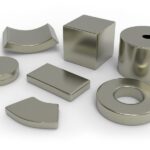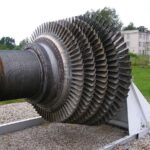A Psychrometric chart can graphically represents the thermodynamic properties of air-water vapor mixture. Standard psychrometric charts are bounded by the dry-bulb temperature line (X – axis) and the vapor pressure or humidity ratio (Y – axis). The Left Hand Side of the psychrometric chart is bounded by saturation line.
Below image shows the schematic diagram of a psychrometric chart.
Psychrometric charts are readily available for standard barometric pressure of 101.325 kPa at sea level and for normal temperatures (0-50ºC).

§ Vertical lines with uniform spacing on psychrometric chart are called as dry bulb temperature (DBT) lines.
§ Inclined lines sloping downwards to right with uniform spacing starting from Relative Humidity (RH) = 100 % lines are called on the psychrometric chart parallel to R.H 1005 line are called Relative humidity (pie) lines.
§ When constant specific humidity lines meet RH = 100 % are called Dew Point Temperature (DPT).
§ For any condition of air on constant specific humidity lines, DPT is same.
§ Enthalpy scale is provided on chart above RH = 100 % line.
§ Constant enthalpy lines lines are inclined lines sloping downwards to right starting from RH = 100 % curve.
§ For all practical purposes constant enthalpy lines and Wet Bulb Temperature (WBT) lines are parallel.
§ Technically speaking there is slight deviation between constant enthalpy lines and WBT lines. As deviation is appreciable we consider them as parallel for all practical purposes.
§ Constant specific volumes lines are inclined (more than WBT) lines.
§ Sensible Heat Factor (SHF) lines are inclined lines sloping downwards to left.
§ Horizontal lines with non uniform spacing on the psychrometric chart are called as constant vapor pressure lines.
§ The state having 25ºC DBT and 50 % RH is the comfort zone. If conditions of air is in that zone human feels maximum comfort.
Applications of Psychrometry:
1. HVAC systems, animal, plant and human comfort.
2. Air-conditioning devices.
3. Cooling towers.
4. Industrial processes requiring close control of the vapour content in air.
5. Food science and engineering.
6. Animal housing.
7. Plant systems (Greenhouse gases, growth chambers, plant based bio-degenerative life support systems etc.).
8. Evaporative coolers.
9. Mold problems & health related issues (Dew & Condensation).
10. Water harvesting in arid lands.


